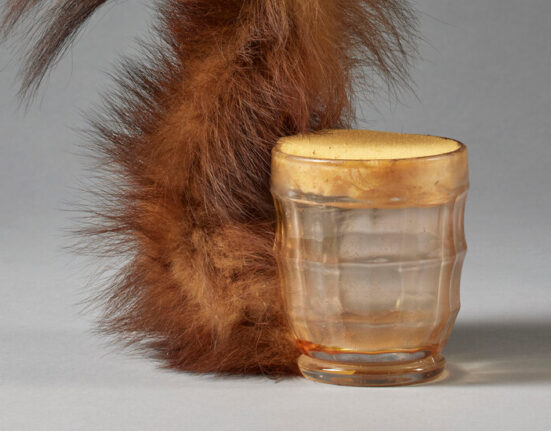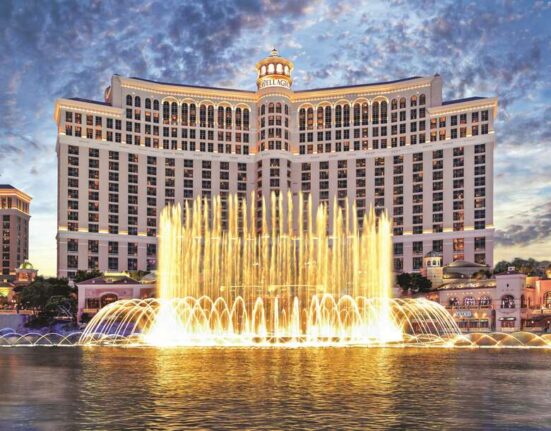This article is part of the Fine Arts & Exhibits special section on the art world’s expanded view of what art is and who can make it.
“I think we’re hard-wired to be afraid of people who are different from us,” said Linda Komaroff, a curator of Islamic art at the Los Angeles County Museum of Art. “A show focused on dining makes it easier. We all eat, we all like food.”
Ms. Komaroff was talking about “Dining with the Sultan: The Fine Art of Feasting,” the exhibition she has organized at the Los Angeles museum, which opens Dec. 17 and runs through Aug. 4.
The show is one of several in the country this year that look at how the global south and other cultures have affected the West and its understanding of the world. Global south has increasingly gained traction as a — sometimes controversial — term for developing and underdeveloped countries in Africa, Latin America, Asia, Oceania and the Caribbean.
Although the art canon has long been dominated by a white, male, European sensibility, museums are now making a concerted effort to integrate the artistic contributions of historically marginalized cultures and to make connections between them.
At the Metropolitan Museum of Art, “Africa & Byzantium,” which opens Nov. 19, examines how the Byzantine Empire was shaped by North African cultures and features luxury objects, paintings and religious manuscripts — some of them on public view for the first time.
“People have known about Northern Africa and material culture, but it’s always been seen as Roman art or Byzantine art,” said Andrea Achi, an associate curator at the Met who organized the show. “The African part of that world hasn’t been recognized or privileged.”
The Met show, which runs through March 3, makes connections between Sudan, Ethiopia, Egypt and Constantinople through textiles, mosaics and jewelry to “exemplify materials between regions we did not learn about when we were learning about art history,” Ms. Achi said.
An exhibition at the Cleveland Art Museum focuses on southern China. The show, “China’s Southern Paradise,” which opened Sept. 10 and runs through Jan. 7, looks at artistic and cultural production south of the Yangtze River, the site of some of the earliest trade routes and rice cultivation.
The show features more than 200 objects from 30 collections, including from Chinese museums like the Palace Museum in Beijing, the Shanghai Museum and the Nanjing Museum.
“Much that today seems integral to Chinese art and culture flourished in the south,” said William M. Griswold, the museum’s director. “Even our Western understanding of Chinese civilization has been very much shaped by the extraordinary civilization that developed in the region.”
The show features masterpieces from 5,000 years of Chinese artistic production, including Neolithic jades, Han dynasty bronzes, stone sculptures, lacquers and paintings. “It’s important to remind the American public of the arc of Chinese civilization,” Mr. Griswold said. “This is a testament to the importance and power of cultural diplomacy.
“In some ways, it’s more important now than ever,” he added, “the strange relationship between our two countries from a political standpoint has not extended to our cultural partnership.”
The Sultan show at the Los Angeles museum presents 250 works from 30 private collections, highlighting the food cultures of Islamic societies and how these were integrated into the West.
The show also deals with American attitudes toward Islam. Approaching the culture through food can help “change American attitudes about Muslims,” Ms. Komaroff said.
“The theme is something that’s familiar and positive and it emphasizes something that’s universal,” she added, “so it makes an easier entry into something people instinctively think of as foreign or strange and therefore frightening. For most people in America, your first contact with a different culture is through food.”
The exhibition explores how food or beverage containers were made and used — individual versus communal plates, the size of bowls, crafting techniques. The show will include the museum’s 18th-century period room from Damascus. “How did people dine?” Ms. Komaroff said. “We don’t often think about where the food came from or how it got to taste the way it did or why it looks the way it does. I think it will help to make Islamic culture more accessible.”
“Dining with the Sultan” also delves into the origin of certain foods. “Eggplant went from India to the Middle East, which I think is interesting because most people think of eggplant as being a very Middle Eastern dish,” Ms. Komaroff said. “Swedish meatballs go from the Ottoman Empire to Sweden. Food that we think is specific to one place may actually have come from someplace else.”
The curators of all these shows hope that their exhibitions help educate the public about areas that have often been less recognized or understood. “A lot of people are going to see things they’re familiar with,” Ms. Achi said, “but they’re not as familiar with the story behind the maker.”
Mr. Griswold in Cleveland said that even visitors unacquainted with Chinese history are likely to be “dazzled by the extraordinary longevity of Chinese civilization and the incredible beauty of the works of art that China has produced.”
For those who may be more familiar with China, he added, “it is a once-in-a-lifetime opportunity to see these objects together.”







